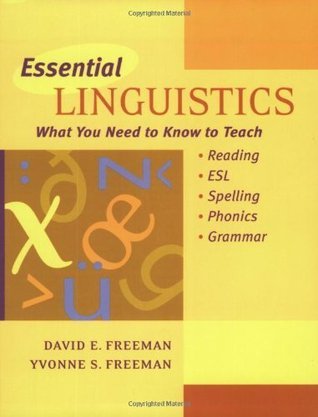What do you think?
Rate this book


With examples, activities, and end-of-chapter applications that link linguistic theory and classroom practice, the Freemans show teachers how to use their new understandings of linguistics to help student learning. Essential Linguistics, Second Edition will be your go-to resource for all things linguistics, now better than ever.
Paperback
First published January 14, 2003